Lukas Mecke
How to Prompt? Opportunities and Challenges of Zero- and Few-Shot Learning for Human-AI Interaction in Creative Applications of Generative Models
Sep 03, 2022
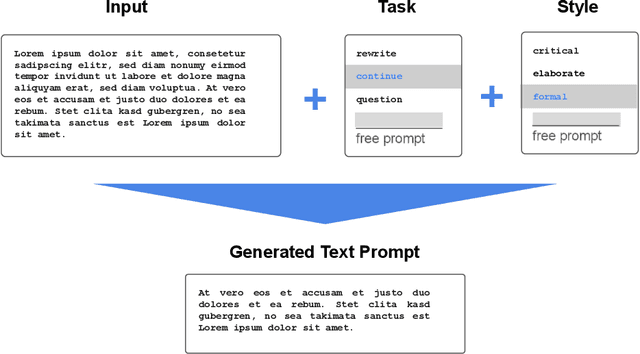
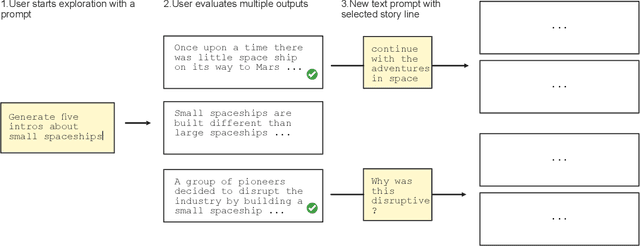
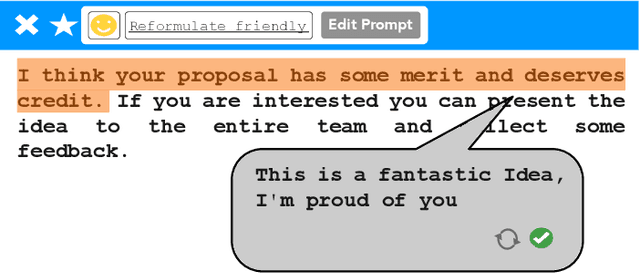
Abstract:Deep generative models have the potential to fundamentally change the way we create high-fidelity digital content but are often hard to control. Prompting a generative model is a promising recent development that in principle enables end-users to creatively leverage zero-shot and few-shot learning to assign new tasks to an AI ad-hoc, simply by writing them down. However, for the majority of end-users writing effective prompts is currently largely a trial and error process. To address this, we discuss the key opportunities and challenges for interactive creative applications that use prompting as a new paradigm for Human-AI interaction. Based on our analysis, we propose four design goals for user interfaces that support prompting. We illustrate these with concrete UI design sketches, focusing on the use case of creative writing. The research community in HCI and AI can take these as starting points to develop adequate user interfaces for models capable of zero- and few-shot learning.
GANSlider: How Users Control Generative Models for Images using Multiple Sliders with and without Feedforward Information
Feb 02, 2022



Abstract:We investigate how multiple sliders with and without feedforward visualizations influence users' control of generative models. In an online study (N=138), we collected a dataset of people interacting with a generative adversarial network (StyleGAN2) in an image reconstruction task. We found that more control dimensions (sliders) significantly increase task difficulty and user actions. Visual feedforward partly mitigates this by enabling more goal-directed interaction. However, we found no evidence of faster or more accurate task performance. This indicates a tradeoff between feedforward detail and implied cognitive costs, such as attention. Moreover, we found that visualizations alone are not always sufficient for users to understand individual control dimensions. Our study quantifies fundamental UI design factors and resulting interaction behavior in this context, revealing opportunities for improvement in the UI design for interactive applications of generative models. We close by discussing design directions and further aspects.
Nine Potential Pitfalls when Designing Human-AI Co-Creative Systems
Apr 01, 2021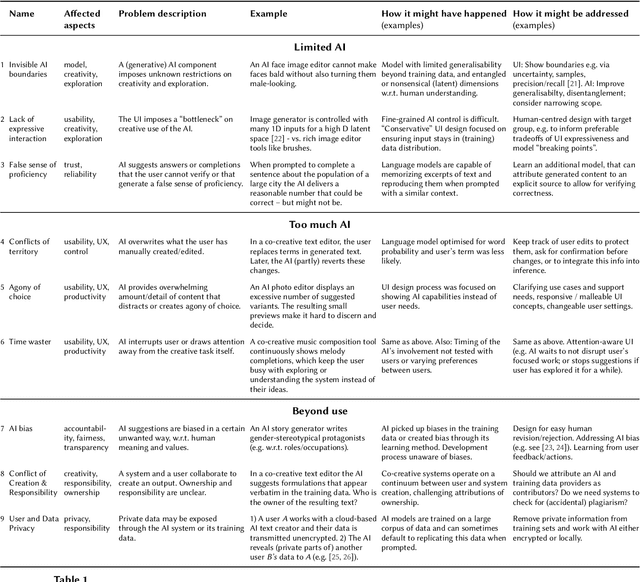

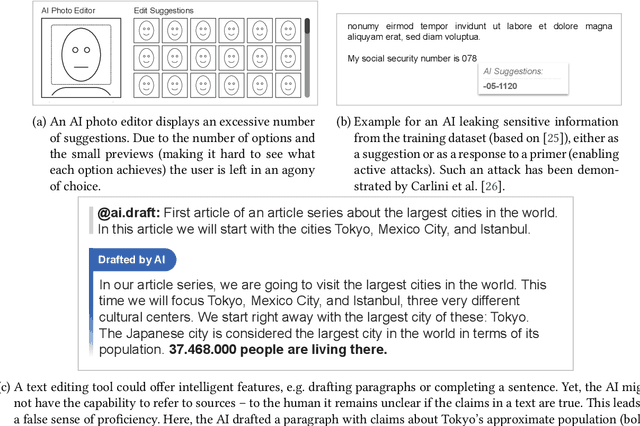
Abstract:This position paper examines potential pitfalls on the way towards achieving human-AI co-creation with generative models in a way that is beneficial to the users' interests. In particular, we collected a set of nine potential pitfalls, based on the literature and our own experiences as researchers working at the intersection of HCI and AI. We illustrate each pitfall with examples and suggest ideas for addressing it. Reflecting on all pitfalls, we discuss and conclude with implications for future research directions. With this collection, we hope to contribute to a critical and constructive discussion on the roles of humans and AI in co-creative interactions, with an eye on related assumptions and potential side-effects for creative practices and beyond.
 Add to Chrome
Add to Chrome Add to Firefox
Add to Firefox Add to Edge
Add to Edge